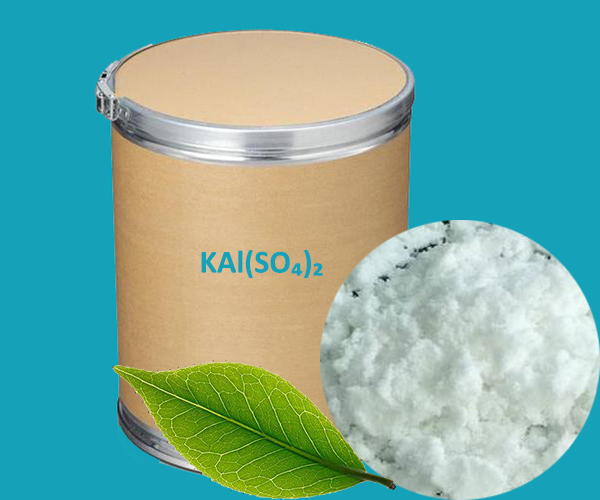Potassium aluminium sulfate, better known as potassium alum or potash alum, is the double sulfate of aluminium and potassium. Its chemical formula is KAl(SO₄)₂ and it is commonly found in its dodecahydrate form as KAl(SO₄)₂·12(H₂O). The dodechydrate is sometimes commercialised as alum. It is commonly used in water purification, leather tanning, fireproof textiles, and baking powder. It also has uses as a deodorant, as an aftershave treatment and as acidity regulator in food.
Properties of Potassium Aluminium Sulfate
Chemical formula : KAl(SO₄)₂·12(H₂O)
Molar mass : 474.39 g/mol
Density : 1.757 g/cm³ (20 °C)
Melting point : 64.5 °C
Boiling point : 200 °C
Solubility in water : 11.4 g/100 ml (20 °C)
Uses of Potassium Aluminium Sulfate
Fire Retardant : The use of potassium alum for textiles, wood and paperless flame resistance is a fire-retardant.
Tanning : For leather tanning, potassium alum is used to extract moisture from the hide and avoid rotting. Alum is not covered and can be washed out, as compared to tannic acid.
Iron and Steel Dissolving : This aluminium solution has the property that steels are dissolved without affecting aluminium or base metals. For machined castings of steel parts of machinery, alum solutions can be used.
Gourmet Food : Potassium alum may be an acidic component in baking powder to provide a second leavening step at high temperatures (although sodium alum is more widely used for this purpose).
Used for Dyeing : Alum was used to form a permanent link between natural textile fibres like wool and dye, as mordant.
Pigmentation of the Lake : Aluminium hydroxide from alum acts as a base for most lake pigments.
Blocking Chemicals : Since remote antiquity, potassium alum was used for purifying turbid liquids. The drinking water and industrial water systems, effluent treatment, and post-storm lake procedures continue to be commonly used for the treatment of pollutants in precipitation.
 English
English Español
Español Português
Português Français
Français Deutsch
Deutsch Русский
Русский 中文
中文 日本語
日本語
